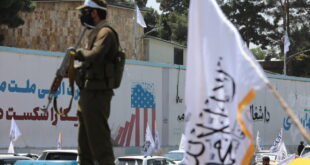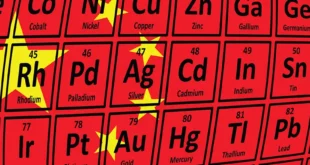Mediators alone do not guarantee success, but there are few examples of significant peace agreements in their absence.
At present, the Afghan peace negotiations (APN) between the Afghan government and the Taliban do not involve any third-party presence beyond hosting and supporting roles. The parties to the conflict and members of the international community might consider the benefits of a neutral, third-party mediator to help resolve the impasses that have dogged and delayed the negotiations so far. While the presence of a mediator does not guarantee success, there are very few examples of a significant peace agreement that has been reached without some sort of third-party facilitation or mediation.
While neither party has yet formally consented to mediation, it is worth looking at the possible functions a mediator would serve, the characteristics of an individual who might be well-suited for this role, and the various options through which such an individual might join the peace process.
A Note on Terms
The U.N. defines mediation as “a process whereby a third party assists two or more parties, with their consent, to prevent, manage or resolve a conflict by helping them to develop mutually acceptable agreements.” The words “mediation” and “facilitation” are often used interchangeably. In the mediation world, facilitation is a lighter mandate and tends to focus on process, leaving the parties to negotiate substance. Mediators address both process and substance (e.g., suggesting compromises to break deadlocks). In practice, the lines are often blurred. Facilitation can lead to mediation when both parties gain confidence in the facilitator/mediator.
Once endorsed by the international community (whether through a U.N. mandate or by agreement among key countries concerned) a third-party mediator can also “institutionalize” a peace process, enabling it to better survive moments when one party walks away from the table.
Functions
Facilitator/mediator functions can include:
Building trust in the process by giving the parties the feeling of fairness and impartiality;
Reinforcing the sustainability of the process by meeting with the parties in proximity format (shuttling between the two) in between meetings and during periods of breakdown;
Facilitating the process by proposing dates, agendas, venues, participation and process design/procedural options as well as operational/logistic support;
Framing the process by setting expectations, norms and principles for the dialogues (i.e., “rules of the road” for the process);
Promoting the inclusion of groups that conflict parties might otherwise marginalize;
Suggesting solutions to overcome impasses, including confidence-building measures or tactical disengagements;
Helping resolve differences within negotiating teams;
Serving as a neutral pen holder for working through text;
Reminding parties of the importance of trying to achieve a resolution through talking not fighting;
Maintaining contact with important outside stakeholders (neighboring states, U.N. Security Council members, NATO member states, “friends of” groups, civil society groups and others that feel excluded from the process);
Briefing the press in lieu of the parties themselves commenting publicly; and
Helping to rally international support for implementing the agreement.Effective mediation requires the consent of all parties to the negotiation. The formulation of a third-party mandate can range from “witnessing” or “accompanying” a process to “troubleshooting” to facilitation and full mediation, as described above. A mandate for facilitation can be designed to allow the facilitator to gain trust as the process moves forward, such that they can eventually engage in mediation. For example, a facilitation mandate can specify that the facilitator only deals with process issues, but include a clause allowing them to “undertake any further role that the parties agree to.”
Characteristics
Factors in considering a facilitator/mediator for the Afghan peace process include:
Profile: A high-profile mediator brings attention and prestige to the process and would have the benefit of being better positioned to enjoy the respect of senior figures on both sides and stand up to them when necessary. Such an individual might also have the additional ability to engage with external stakeholders at high levels. This is particularly important in the Afghan case given the number of important countries that have interests in the outcome of the negotiations. On the other hand, more prominent names are also more likely to carry personal histories that might alienate one or another party.
Nationality/religion: There are pros and cons to the facilitator/mediator coming from a non-Western country or being a Muslim. A Muslim mediator with knowledge of mainstream Islamic jurisprudence would have the advantage of being able to distinguish contemporary Muslim thinking on political issues from the Taliban’s highly particularistic take on Islam. Ultimately, a mediator’s success will depend most on acceptability to both sides, but a mainstream Muslim mediator may be able to tilt the perceived balance of Islamic rectitude away from the Taliban, given that the Islamic republic’s constitution also recognizes the paramount role of Islam.
Afghan experience: Someone with experience in Afghanistan would better understand the issues and rivalries, but might also be less palatable because they are known to some parties. An experienced figure who has not worked in Afghanistan might be seen as more neutral and bring fresh thinking to the negotiation.
Process or substance: There are pros and cons to the various mixes between someone who is a process expert, a substantive expert (i.e., on constitutions, etc.), or a country expert. Gaps in a mediator’s expertise could be mitigated through the selection of a deputy or other staff.
U.S. confidence: Given the continued importance of U.S. support to Afghanistan, as well as the fact that the U.S.-Taliban “Doha agreement” is a foundation of the APN, U.S. confidence in the mediator would be crucial.Options
A mediator appointed by the U.N. secretary-general at the request of the parties (possibly with a Security Council mandate). Given the nature of the mandate and the need for impartiality, this person would be distinct from the special representative of the secretary-general for Afghanistan and the head of the United Nations Assistance Mission in Afghanistan (UNAMA), but might benefit from advice from UNAMA.
Pros: Backing from the Security Council gives international legitimacy to the process and blunts criticism of member states regarding the mediator; has the endorsement of relevant major powers, including two veto-wielding permanent members of the Security Council—Russia and China—and prominent European Union (EU) member states; can take advantage of the U.N.’s substantive resources (Standby Team, Mediation Support Unit, UNAMA’s political analysis); allows a mediator to influence Security Council tools like sanctions, resolutions, mandates for field missions or simply public sessions and statements; and running an entire mediation process within the same institutional entity ensures unity of purpose and coherence.
Cons: Member states can exert pressure within the U.N. over the mediator selection process; the U.N. can be slow to appoint the right person; international politicking could result in a suboptimal mandate formulation; and Afghan parties to the conflict carry assorted baggage toward the U.N. generally.A mediator appointed at the request of the parties by another organization (e.g., the Organisation of Islamic Cooperation [OIC], the EU, etc.) or entity. NGOs have played mediation roles, as have countries or groups of countries.
Pros: Could be a more efficient process than the U.N.; certain organizations/countries have expertise/cultures that are specifically relevant to resolving the conflict (e.g., a Muslim mediator for Afghanistan endorsed by the OIC); and the right configuration of states could confer most of the same international legitimacy as the Security Council, if they agreed on a single mediator.
Cons: Might be taken less seriously by the international community and receive fewer resources; lack of international community backing might increase allegations of partiality or make mediator easier to dismiss; and the OIC has limited experience and capacity for such mediations and the potential contribution of its member states is minimal.An individual is “invited” by the parties to be the mediator, and there is no external appointment. Support functions are then provided by an agreed-upon country or organization.
Pros: Avoids the organizational/bureaucratic complexities of the first option; would be a confidence-building measure, if the parties could agree; and the Afghan government might be more willing to accept this model because it would not appear to be “imposed” on it.
Cons: It might be too easy for one of the parties to dismiss the person during the process by showing a lack of confidence, and hard to arrange for their agreement to jointly invite someone.Ad hoc mediation: Participants in the process agree to call on different figures, as needed, to resolve impasses, or a co-mediation team that brings in two or more mediators with different criteria and profiles.
Pros: Avoids problems related to the negative characteristics of any single mediator; allows for flexibility/specialization; and does not force parties to commit to mediation if they are not ready.
Cons: No guarantee that the right person could be found at the right time; allows parties to hide behind delays in mediation to delay the overall process; highly unusual format that would still require some “quarterbacking” to decide when interventions are necessary; and expands the number of potential conflicts of interest or vetoes against each mediator.Mediation is an art not a science. It is possible that a third-party mediator might have allowed the two sides in the APN to reach an agreement on procedures more quickly than they did, for example. But the most important factor in the success of a mediator is having the trust of both parties. Sometimes it is necessary for the parties themselves to reach a point of failure or frustration before deciding that they need mediation. That perception of necessity drives the legitimacy of the mediator. Then the hard work of keeping the confidence of both sides begins.
 Eurasia Press & News
Eurasia Press & News



